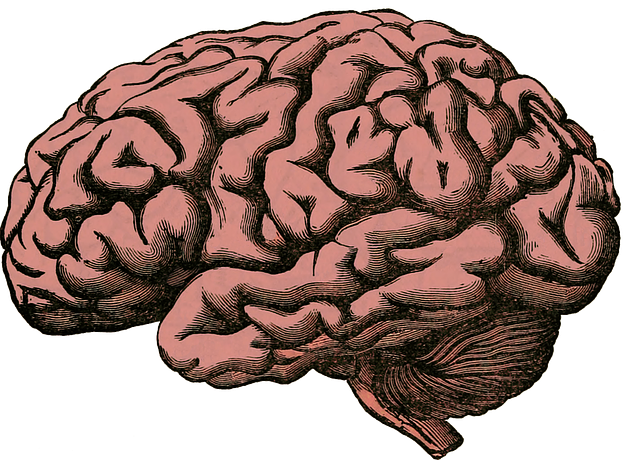Mental health therapists specializing in adolescent teens with learning disabilities require nuanced understanding of risk factors like anxiety, depression, and identity struggles. Early identification through adapted communication strategies and specialized assessment techniques is key to effective therapy planning. Burnout prevention, policy advocacy, and stress management techniques enhance therapeutic outcomes. Structured CBT or ACT sessions, journaling exercises, compassion cultivation, and "Mind Over Matter" principles empower teens to manage their mental health proactively. Regular review and adaptation of risk assessment strategies based on individual needs and latest research ensure optimal therapy outcomes for this vulnerable population.
“In the intricate field of mental health professionals, risk management planning is paramount, especially when treating adolescent teens with learning disabilities. This comprehensive guide delves into the critical aspects of identifying and mitigating risks in therapy sessions. We explore key sections including understanding unique risk factors specific to adolescent therapy, assessing mental health risks for teens with learning disabilities, developing robust risk management strategies, and ongoing adaptation techniques. By implementing these insights, professionals can foster safer, more effective therapeutic environments.”
- Understanding Risk Factors in Adolescent Therapy
- Assessing Mental Health Risks for Teens with Learning Disabilities
- Developing a Comprehensive Risk Management Plan
- Strategies for Mitigating and Monitoring Risks
- Ongoing Evaluation and Adaptation in Therapy Practice
Understanding Risk Factors in Adolescent Therapy

In the realm of mental health professional services, especially when catering to adolescent teens with learning disabilities, a nuanced understanding of risk factors is paramount. Therapists must navigate complex emotional landscapes while addressing unique challenges inherent in working with this demographic. Adolescent clients often present with issues such as anxiety, depression, and identity struggles, which can be exacerbated by the additional layer of learning differences. Identifying these risks early on is crucial for effective therapy planning.
Risk management involves recognizing potential pitfalls like burnout, a prevalent concern among healthcare providers. Given the demanding nature of adolescent therapy, implementing robust burnout prevention strategies is essential. This may include regular self-care practices, peer support networks, and clear boundaries to foster sustainability in the profession. Mental health policy analysis and advocacy also play a role in ensuring supportive environments for both professionals and their young clients. Effective stress management techniques are vital tools to mitigate risks and enhance the overall therapeutic experience.
Assessing Mental Health Risks for Teens with Learning Disabilities

Assessing mental health risks for teens with learning disabilities is a specialized task that requires tailored strategies. These adolescents often face unique challenges, such as coping with diagnostic labels, accommodating specific learning needs in therapy, and fostering positive thinking amidst potential self-esteem issues. Mental health professionals must be adept at recognizing these subtler indicators of distress to provide effective support.
The process involves employing adapted communication strategies that cater to the individual’s learning style, ensuring clear understanding during sessions. Incorporating elements from a mental wellness podcast series production can offer creative insights, while focusing on evidence-based techniques ensures a robust framework for risk management. By doing so, professionals can help these teens navigate their disabilities and promote overall mental wellness in an inclusive and supportive environment.
Developing a Comprehensive Risk Management Plan

In the realm of mental health services, particularly when catering to adolescent teens with learning disabilities, a comprehensive risk management plan is an indispensable tool for ensuring safe and effective therapy. This involves meticulously assessing potential risks specific to this population, such as unique learning challenges, communication barriers, or co-occurring conditions that might complicate treatment. By developing a tailored plan, mental health professionals can navigate the intricate landscape of adolescent development and disability, fostering an environment conducive to healing.
The plan should encompass various strategies, including evidence-based stress reduction methods suitable for teens, integrating these into therapy sessions alongside Mental Health Education Programs Design. Enhancing self-esteem and building coping mechanisms are crucial aspects, as they empower adolescents to manage their mental health proactively. A well-structured risk management approach not only mitigates potential pitfalls but also optimizes the therapeutic process, ultimately contributing to positive outcomes for this vulnerable demographic.
Strategies for Mitigating and Monitoring Risks

Mental health professionals are tasked with supporting individuals through complex and sensitive issues, often involving adolescents with learning disabilities. To ensure effective risk management, several strategies can be employed. Firstly, implementing structured therapy sessions tailored to each teen’s unique needs, such as Cognitive Behavioral Therapy (CBT) or Acceptance and Commitment Therapy (ACT), can provide a safe space for processing emotions and behaviors. Additionally, integrating journaling exercises into treatment plans encourages self-reflection and allows professionals to monitor clients’ progress and identify potential risks early on.
Beyond therapy, compassion cultivation practices have proven beneficial in mitigating risks. Teaching mindfulness and empathy skills empowers teens to regulate their mental wellness and foster healthier relationships. Similarly, promoting Mind Over Matter principles enables individuals to reframe challenges, cultivating resilience and a growth mindset. Regularly reviewing and updating risk assessment strategies, coupled with these evidence-based methods, ensures professionals are equipped to navigate the complexities of adolescent mental health effectively.
Ongoing Evaluation and Adaptation in Therapy Practice

Mental health professionals must adopt a dynamic approach to their practice, incorporating ongoing evaluation and adaptation. This involves regularly reflecting on treatment outcomes and adjusting therapeutic methods based on individual patient needs. By staying abreast of the latest research in adolescent therapy for those with learning disabilities, practitioners can tailor interventions more effectively. For instance, integrating strategies from stress management workshops and emotional regulation training into sessions may enhance engagement and outcome.
Adaptation also includes recognizing signs of burnout, which is prevalent among healthcare providers. Implementing prevention strategies, such as regular self-care practices and seeking support from colleagues or professional networks, is vital to maintaining resilience. This continuous process ensures that therapy remains responsive to the evolving needs of adolescent clients navigating their unique challenges, including learning disabilities and associated emotional hurdles.
Mental health professionals play a vital role in supporting adolescent teens with learning disabilities, but this comes with unique challenges. By understanding specific risk factors and implementing a well-structured risk management plan, therapists can create a safe and effective therapeutic environment. This includes assessing individual risks, developing tailored strategies for mitigation, and continuously evaluating and adapting practices. Such proactive measures ensure that therapy remains beneficial and protective, fostering positive outcomes for this vulnerable population in the context of therapy for adolescent teens with learning disabilities.














